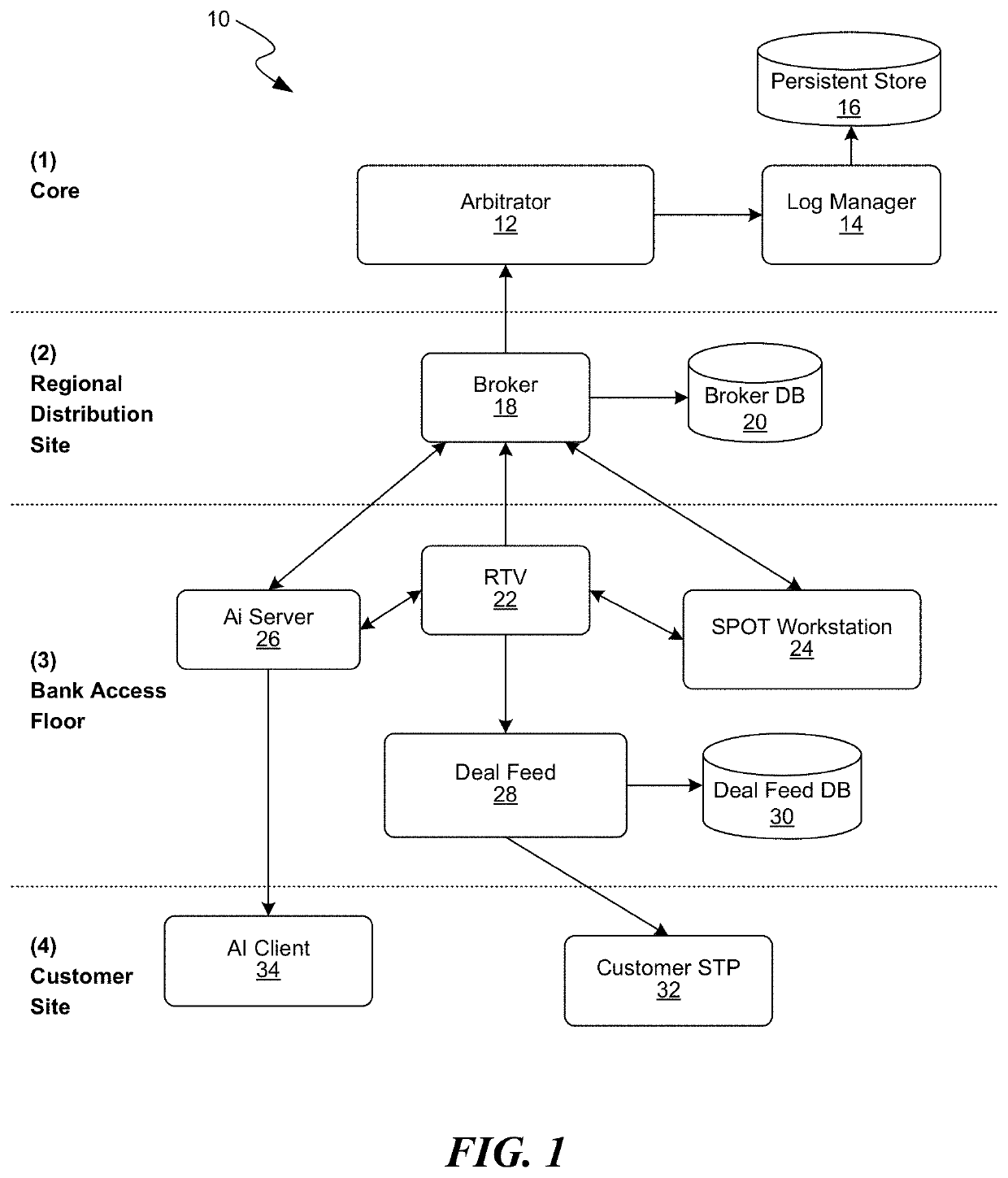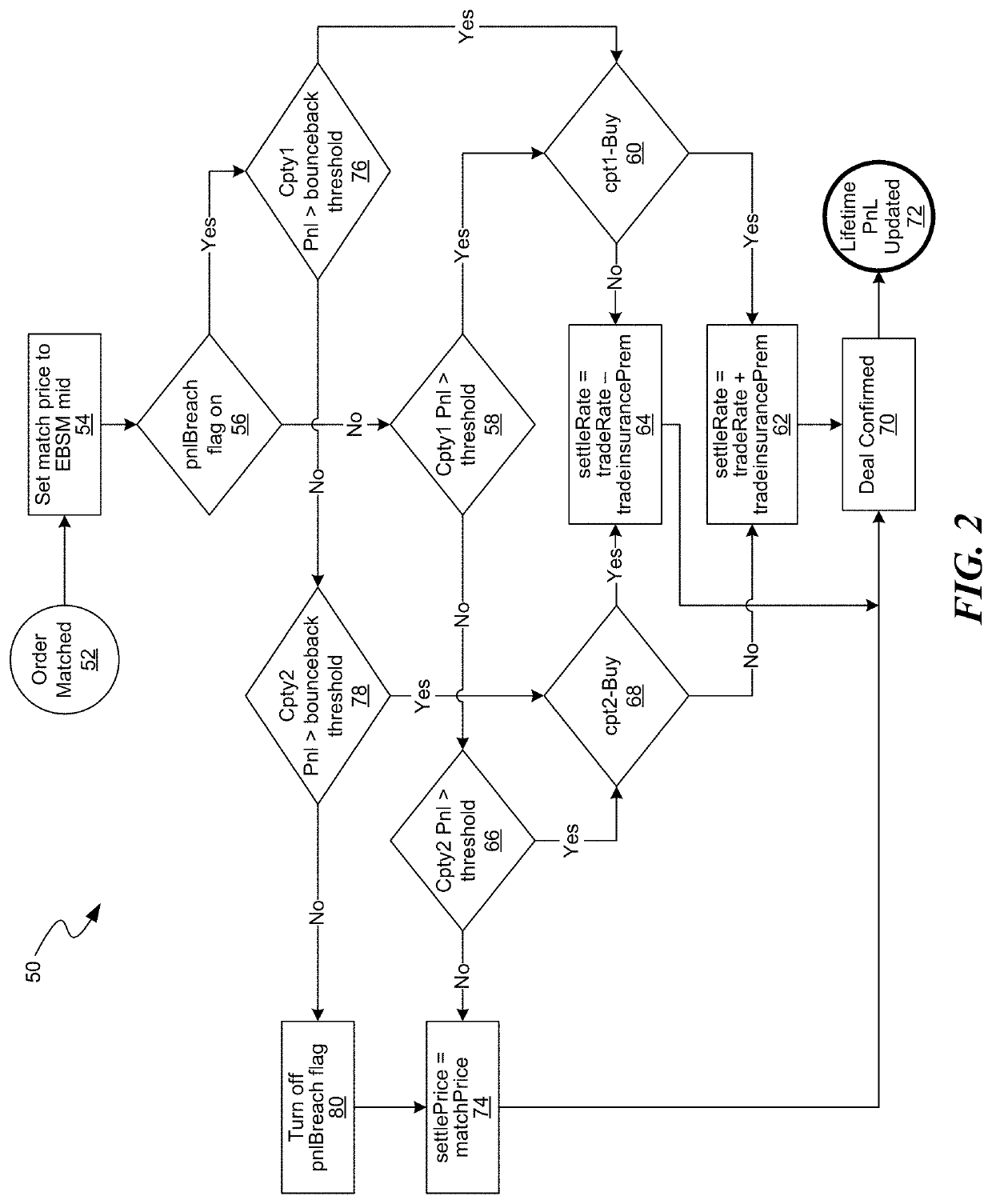Electrical computer system processing architecture
- Summary
- Abstract
- Description
- Claims
- Application Information
AI Technical Summary
Benefits of technology
Problems solved by technology
Method used
Image
Examples
Embodiment Construction
[0033]An electrical computer system processing architecture for providing an indication of activity in the computer system is illustrated in FIG. 1. The computer system comprises at least one server in the form of an arbitrator computer or matching engine 12 and a plurality of client computers in the form of broker computers or order input devices 18 that are connected to the at least one server by a computer network.
[0034]In this example, the computer system takes the form of an anonymous trading computer system. These types of computer system are widely used to trade fungible instruments, particularly financial instruments such as foreign exchange (FX) products. These systems have been very successful and are used for the majority of transactions in some instruments, for example spot FX.
[0035]As their name suggests, anonymous trading systems do not allow the participants to know the identity of potential counterparties to a transaction until the trade has been confirmed. One well ...
PUM
 Login to View More
Login to View More Abstract
Description
Claims
Application Information
 Login to View More
Login to View More - R&D
- Intellectual Property
- Life Sciences
- Materials
- Tech Scout
- Unparalleled Data Quality
- Higher Quality Content
- 60% Fewer Hallucinations
Browse by: Latest US Patents, China's latest patents, Technical Efficacy Thesaurus, Application Domain, Technology Topic, Popular Technical Reports.
© 2025 PatSnap. All rights reserved.Legal|Privacy policy|Modern Slavery Act Transparency Statement|Sitemap|About US| Contact US: help@patsnap.com



